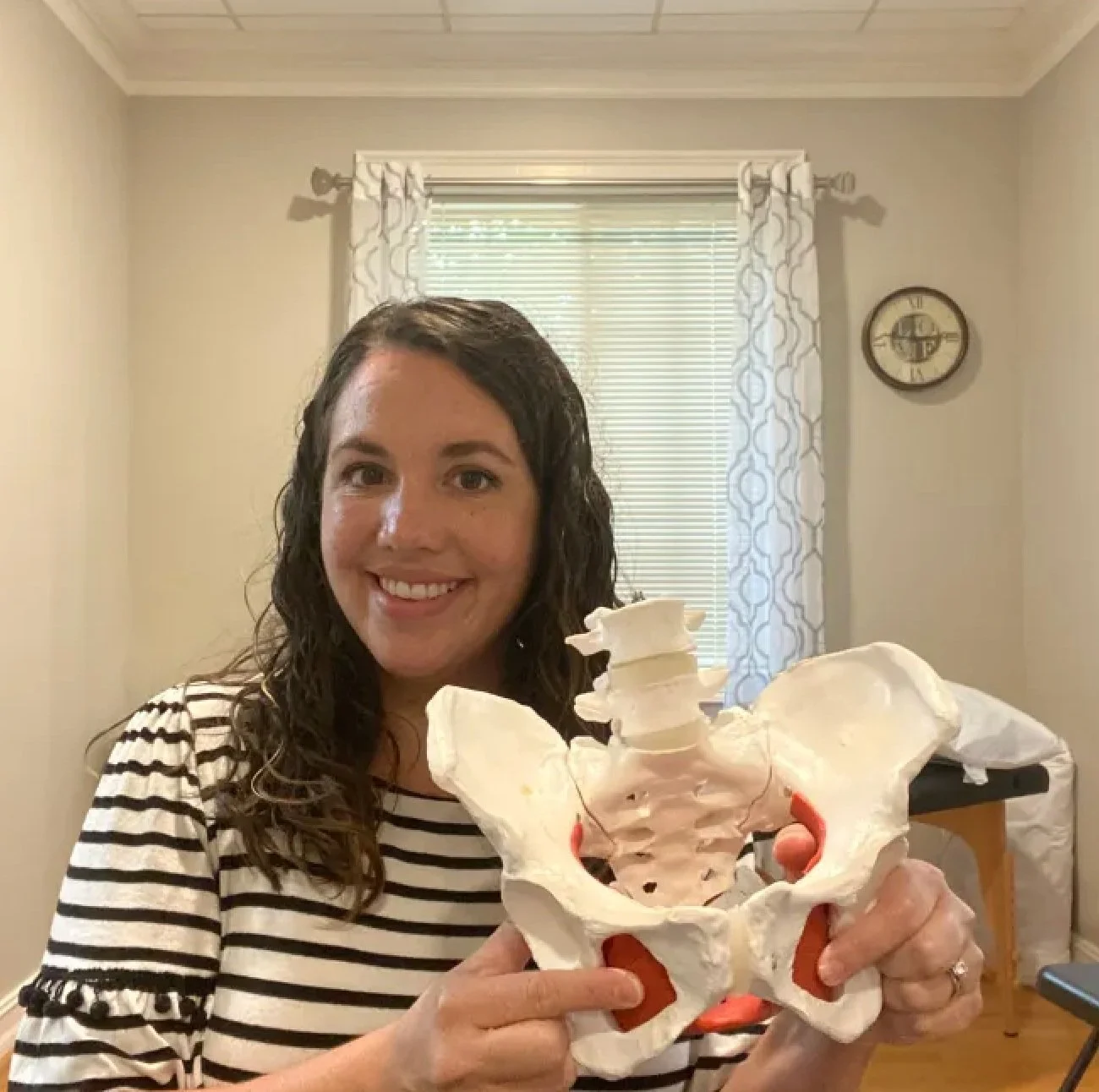Meet the Obturator Internus
You all know by now that I'm fairly nerdy. I love reading research articles, trying to understand complex topics, and everything about learning. Honestly, I think that is why I love pelvic health so much! The pelvis is so complicated! There's so much to know, and the more I learn, the more I truly realize how much more there is to know! As an anatomy nerd, you know I have favorite muscles. I've written about the respiratory diaphragm, who is one of my most favorites, but I haven't spent much time introducing you to my other love~ the obturator internus!
What is the Obturator Internus and What does It Do?
The Obturator Internus (Or OI, as they are known by friends) is a muscle that lives inside your pelvis in the obturator foramen and attaches to the hip via the greater trochanter.
The OI has several major functions for the body. First, it is a deep hip external rotator, and has shown to be active during the movements of hip extension, external rotation and abduction. In fact, this research showed that it was the first muscle to turn on in these motions (which I theorize could be part of it's connection to the pelvic floor muscles and the anticipatory role the pelvic floor has in movement, pressure management and postural stability). My theory on this makes sense when we look at some of the research on the involvement of the OI in hip stability. This excellent article identifies the obturator internus & externus, quadratus femoris, and gemelli as important synergistic muscles that work together to modulate the position of the femoral head in the acetabulum during movement. This is particularly cool because in many ways, this function is very similar to the pelvic floor muscles! The authors suggest a dynamic stabilizing role for these muscles, making subtle alterations in force to control the femoral head position.
This study also recognizes the stabilizing role the OI can play, particularly when it works as a team with the other deep hip rotators. The authors here highlight that the obturator internus, obturator externus, superior & inferior gemelli (who I affectionately call the gemelli brothers) are essentially fused. And this fusion, actually leads to a decent cross-sectional area and ability for force generation. The orientation of the fibers adds further credence to the view that these muscles are crucial to hip stability.
The OI shares fascial connections and attachments with the pelvic floor muscles, which makes it an even more unique muscle. The iliococcygeus attaches to the arcus tendoneus linea alba, a fascial line that is also an attachment of the obturator internus. Additionally, the pubococcygeus and OI are fascially connected around the pubic bone, and the fascia around the bladder and urethra also is connected to the OI. What does this mean? It means that the OI can be impacted by what happens at the pelvic floor and can impact what happens at the pelvic floor. And research tends to show this. This study showed that the vast majority of people with pelvic girdle pain have obturator internus tenderness. This study found that most people with chronic pelvic pain have obturator internus tenderness with palpation. And here's another study that found that 45% of people with pelvic pain had tenderness at the obturator internus. Another study found that in people with lumbopelvic pain, experiencing urinary urgency, and central sensitization made them 2x more likely to have concurrent pelvic floor and OI involvement.
Finding the Obturator Internus
One of the cool things about the OI is that it is a muscle that can be palpated both internally via the vagina or rectum, and also externally. The OI is palpated internally with an examining finger angling out toward the hip. You can see the palpation here on my lovely pelvic model.
My finger here is inserted, curving toward the left to access the OI
The OI can also be palpated by examining medial to the ischial tuberosity, then angling in toward the obturator foramen. You can see where palpation would be happening here.
Treating the Obturator Internus
If you think your Obturator Internus is involved in the pain or pelvic floor problems you're experiencing, the first step is to have it examined. Your PT can palpate these muscles as described above. The muscles should be soft and move well, so they should not be sensitive or painful to touch. If they are, they could potentially be involved in the pelvic problems you are experiencing.
From a treatment standpoint, we can address the OI by first improving the mobility via gentle manual therapy, and then improving the overall hip stability (retraining the anticipatory function through the relationship between the pelvic floor & OI). It usually isn't the "sole" problem happening. But including it within your treatment can be key to helping you get better!
Cheers!
Jessica



